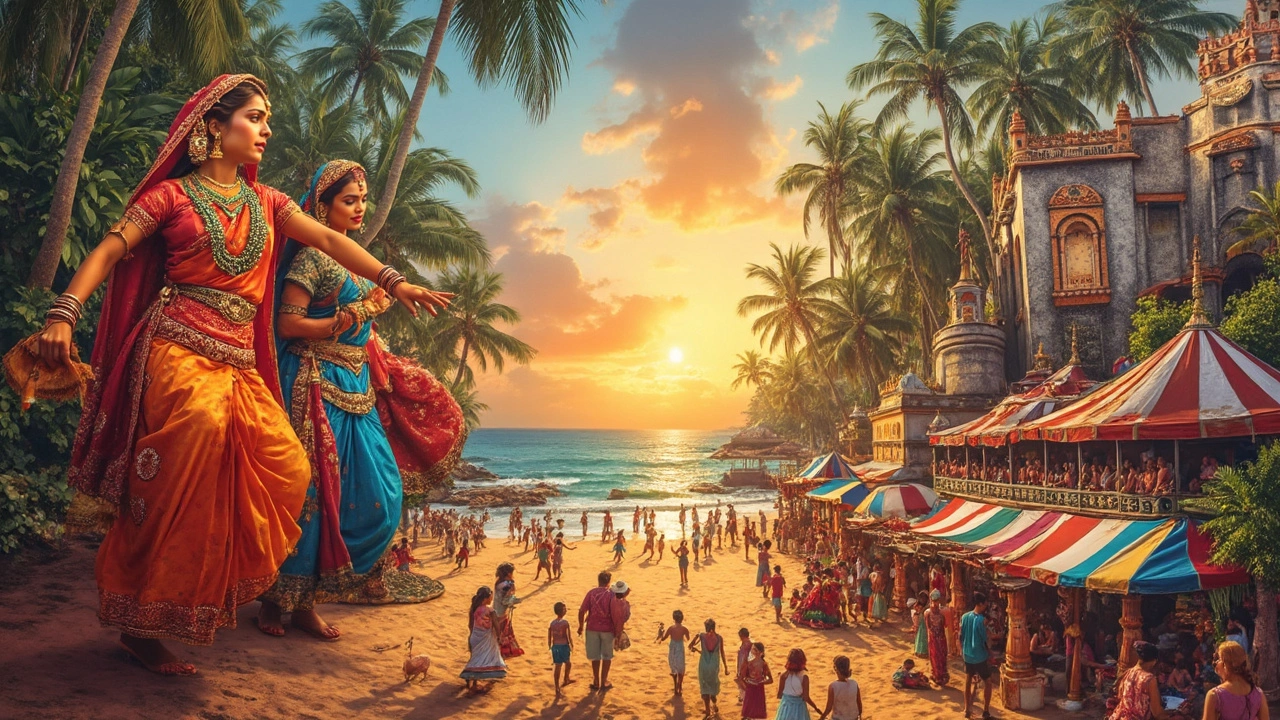SEARCH
Goa Geography: Where It Is, What It Looks Like, and How It Feels
If you’re planning a trip, knowing the land you’ll walk on makes the adventure smoother. Goa sits on India’s west coast, hugging the Arabian Sea. Its small size hides a mix of sandy beaches, green hills, and winding rivers, all of which affect what you can do and when you should go.
Location and Borders
Goa stretches from about 15°N to 15.5°N latitude, putting it near the Tropic of Cancer. To the north, it meets Maharashtra; to the east and south, Karnataka. The state covers roughly 3,700 square kilometres – about the size of Rhode Island – so you can explore most places in a few days.
Major cities include Panaji, the capital, and Vasco da Gama, a busy port. Both sit on the coast, making them natural entry points for flights and trains. The nearest big airports are in Mumbai (about 600 km north) and Bengaluru (about 560 km east). Knowing these distances helps you choose the best way to arrive, whether you prefer a quick flight or a scenic train ride.
Landscape, Climate and Travel Tips
Goa’s coastline runs for 101 km, dotted with famous beaches like Baga, Calangute, and Palolem. The beaches vary – some are bustling with shacks and music, others are quiet and secluded. Inland, the Western Ghats rise sharply, offering green hills, spice farms, and waterfalls such as Dudhsagar. The Mandovi and Zuari rivers flow westward, creating backwater spots perfect for boat rides.
The climate follows a tropical pattern. Summer (March to May) brings hot, humid days, often topping 35°C. The monsoon season (June to September) drenches the state, turning waterfalls into roars and greening the hills. While rain can be a hassle for beach lovers, it’s ideal for nature photography and fewer crowds. Winter (November to February) offers comfortable temperatures around 25°C and is the peak tourist period.
Practical tip: If you love beach parties, aim for November to February. If you want lower prices and don’t mind occasional showers, plan for late September or early October when the monsoon eases. Pack light cotton clothing for the heat, a rain jacket for the monsoon, and a light sweater for cooler evenings in the hills.
Transport within Goa is easy. Auto‑rickshaws and scooters dominate short trips. For longer distances, buses connect towns, and you can hire taxis for comfort. Remember that roads narrow in hilly areas, so drive carefully.
Understanding Goa’s geography helps you pick the right beach, schedule activities around the weather, and move around without stress. Whether you’re chasing sunrise on a quiet cove, trekking to a waterfall, or cruising the Mandovi at sunset, the state’s landscape shapes every memory you’ll make.

Is Goa North India or South India? Discover Its Unique Blend
Goa, a dreamy destination along India’s western coast, sparks lively debates about its geographical identity—is it part of North India or South India? This blend of cultural influences and historical significance makes Goa a must-visit. From stunning beaches to vibrant nightlife, discover what draws visitors to this coastal paradise. Learn how its Portuguese past and Indian culture create a unique experience.
Continue reading